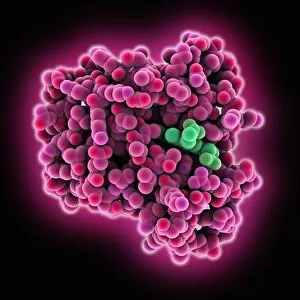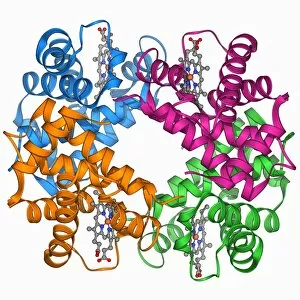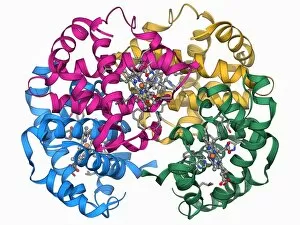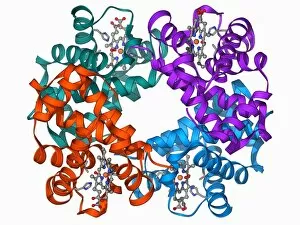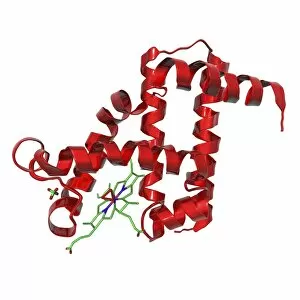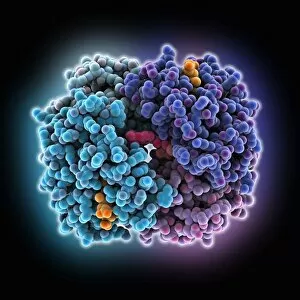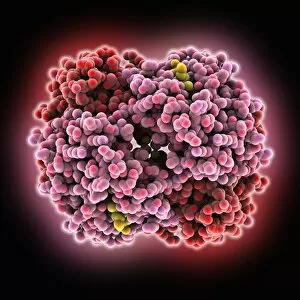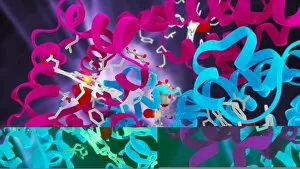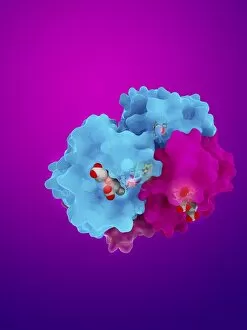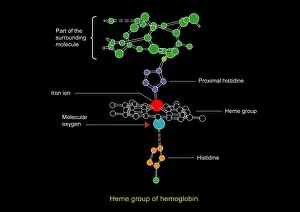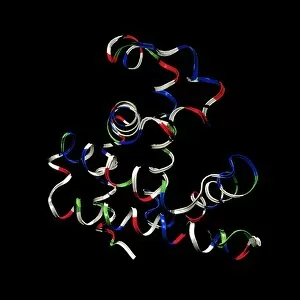Oxygen Transport Collection
"Unlocking the Secrets of Oxygen Transport: A Closer Look at Red Blood Cells and Haemoglobin" In this captivating SEM image
For sale as Licensed Images
Choose your image, Select your licence and Download the media
"Unlocking the Secrets of Oxygen Transport: A Closer Look at Red Blood Cells and Haemoglobin" In this captivating SEM image, we witness the intricate world within our bodies. The first glimpse reveals a cluster of red blood cells, their mesmerizing structure resembling a bustling highway system. These remarkable cells are the unsung heroes responsible for delivering life-sustaining oxygen to every corner of our body. Zooming in further, we encounter an astonishing molecular model - haemoglobin. This vital protein plays a pivotal role in binding and carrying oxygen from our lungs to tissues throughout our body. Its unique structure allows it to bind with four molecules of oxygen, ensuring efficient delivery. As we delve deeper into this microscopic realm, another variant catches our eye - haemoglobin S. Known for its association with sickle cell disease, this mutated form alters the shape of red blood cells impairing their ability to carry oxygen effectively. But let's not forget about myoglobin. This smaller cousin of haemoglobin is found abundantly in muscle tissue and serves as an emergency backup when demand for oxygen surges during intense physical activity or low-oxygen conditions. Its compact structure enables rapid diffusion and release of stored oxygen when needed most. The journey through these captivating images reminds us that behind every breath lies a complex network dedicated solely to sustaining life itself. Understanding the intricacies provides invaluable insights into various health conditions such as anaemia or respiratory disorders. So next time you take a deep breath, remember the tireless efforts made by these tiny but mighty blood cells and proteins working harmoniously together – ensuring your body receives its much-needed supply of precious oxygen.

